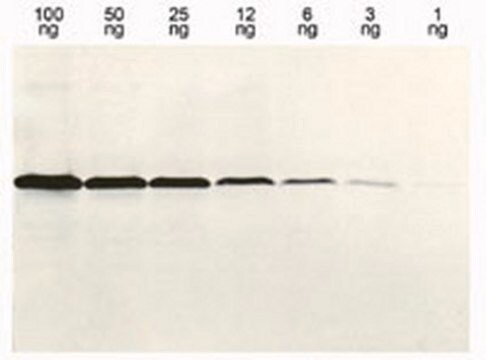推荐产品
生物源
mouse
品質等級
抗體表格
purified immunoglobulin
抗體產品種類
primary antibodies
無性繁殖
26A4.1.2, monoclonal
物種活性(以同源性預測)
all
技術
immunocytochemistry: suitable
immunoprecipitation (IP): suitable
western blot: suitable
同型
IgG1κ
運輸包裝
wet ice
目標翻譯後修改
unmodified
一般說明
The S•Tag fusion protein is one of many polypeptide tags used to facilitate the identification and purification of many targets of interest. The gene encoding the S•Tag peptide can be added into a vector with another gene that encodes a target of interest. Such vectors, which are available through the Novagen product line, are subsequently transfected into various mammalian, bacterial, or insect cell cultures. Because the target of interest and the S•Tag peptide are expressed as one protein, identification of the target is facilitated with the use of antibodies that are specific for the respective fusion tag. Optional purification of the target may be performed using chromatography techniques that allow for the binding and removal of the respective fusion tag, if desired.
免疫原
Linear peptide corresponding to S•Tag fusion proteins.
應用
Detect S•Tag fusion protein using this Anti-S•Tag fusion protein Antibody validated for use in Western Blotting, ICC, Immunoprecipitation.
Immunocytochemistry Analysis: A representative lot detected S•Tag fusion proteins in transfected COS-7 cells.
Immunoprecipitation Analysis: A representative lot immunoprecipitate S•Tag fusion proteins in IP.
Immunoprecipitation Analysis: A representative lot immunoprecipitate S•Tag fusion proteins in IP.
Research Category
Epitope Tags & General Use
Epitope Tags & General Use
Research Sub Category
Epitope Tags
Epitope Tags
品質
Evaluated by Western Blot in Posi-Tag Epitope Tag Control.
Western Blot Analysis: 0.05 µg/mL of this antibody detected S•Tag fusion proteins in 5 µL of Posi-Tag Epitope Tag Control.
Western Blot Analysis: 0.05 µg/mL of this antibody detected S•Tag fusion proteins in 5 µL of Posi-Tag Epitope Tag Control.
標靶描述
~45 kDa observed. The molecular weight of S•Tag fusion protein is not 45 kDa The Posi-Tag Epitope Tag Control, which contains an S•Tag fusion protein, is observed at ~45 kDa
外觀
Protein G Purified
Format: Purified
Purified mouse monoclonal IgG1κ cultured supernatant in buffer containing 0.1 M Tris-Glycine (pH 7.4), 150 mM NaCl with 0.05% sodium azide.
儲存和穩定性
Stable for 1 year at 2-8°C from date of receipt.
分析報告
Control
Posi-Tag Epitope Tag Control
Posi-Tag Epitope Tag Control
其他說明
Concentration: Please refer to the Certificate of Analysis for the lot-specific concentration.
免責聲明
Unless otherwise stated in our catalog or other company documentation accompanying the product(s), our products are intended for research use only and are not to be used for any other purpose, which includes but is not limited to, unauthorized commercial uses, in vitro diagnostic uses, ex vivo or in vivo therapeutic uses or any type of consumption or application to humans or animals.
未找到合适的产品?
试试我们的产品选型工具.
儲存類別代碼
12 - Non Combustible Liquids
水污染物質分類(WGK)
WGK 1
閃點(°F)
Not applicable
閃點(°C)
Not applicable
Minh Bui et al.
Epigenetics & chromatin, 17(1), 19-19 (2024-06-03)
Over the past several decades, the use of biochemical and fluorescent tags has elucidated mechanistic and cytological processes that would otherwise be impossible. The challenging nature of certain nuclear proteins includes low abundancy, poor antibody recognition, and transient dynamics. One
Jana Neuhold et al.
BMC biotechnology, 20(1), 26-26 (2020-05-14)
Recombinant protein production and purification of large protein complexes in eukaryotes requires efficient methods to generate multi-gene expression constructs, where each individual gene is under the control of its own promoter and terminator. Current methods are based either on serial
Pablo Barbeito et al.
Life science alliance, 4(3) (2020-12-30)
G protein-coupled receptors (GPCRs) are the most common pharmacological target in human clinical practice. To perform their functions, many GPCRs must accumulate inside primary cilia, microtubule-based plasma membrane protrusions working as cellular antennae. Nevertheless, the molecular mechanisms underlying GPCR ciliary
Hemant B Badgandi et al.
The Journal of cell biology, 216(3), 743-760 (2017-02-06)
The primary cilium is a paradigmatic organelle for studying compartmentalized signaling; however, unlike soluble protein trafficking, processes targeting integral membrane proteins to cilia are poorly understood. In this study, we determine that the tubby family protein TULP3 functions as a
Vivek Reddy Palicharla et al.
Molecular biology of the cell, 34(3), ar18-ar18 (2023-01-19)
The primary cilium is a nexus for cell signaling and relies on specific protein trafficking for function. The tubby family protein TULP3 transports integral membrane proteins into cilia through interactions with the intraflagellar transport complex-A (IFT-A) and phosphoinositides. It was
我们的科学家团队拥有各种研究领域经验,包括生命科学、材料科学、化学合成、色谱、分析及许多其他领域.
联系技术服务部门
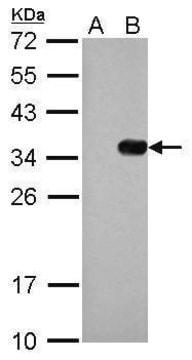
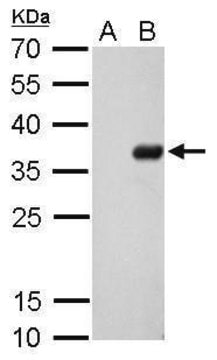
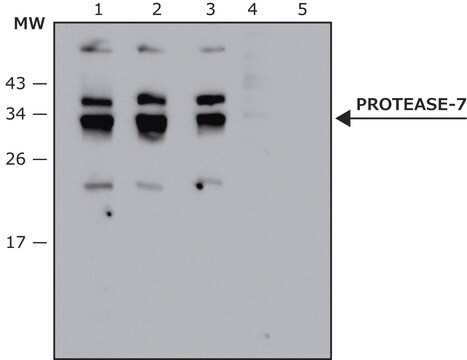
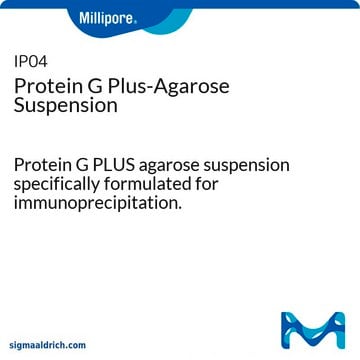

![蛋白印迹封闭试剂,溶液 solution, sufficient for 10 blots (11921673001 [100 cm2]), sufficient for 60 blots (11921681001 [100 cm2])](/deepweb/assets/sigmaaldrich/product/images/352/091/ef743cea-ccd8-44f1-8f3b-dec5a1e4f5d1/640/ef743cea-ccd8-44f1-8f3b-dec5a1e4f5d1.jpg)
